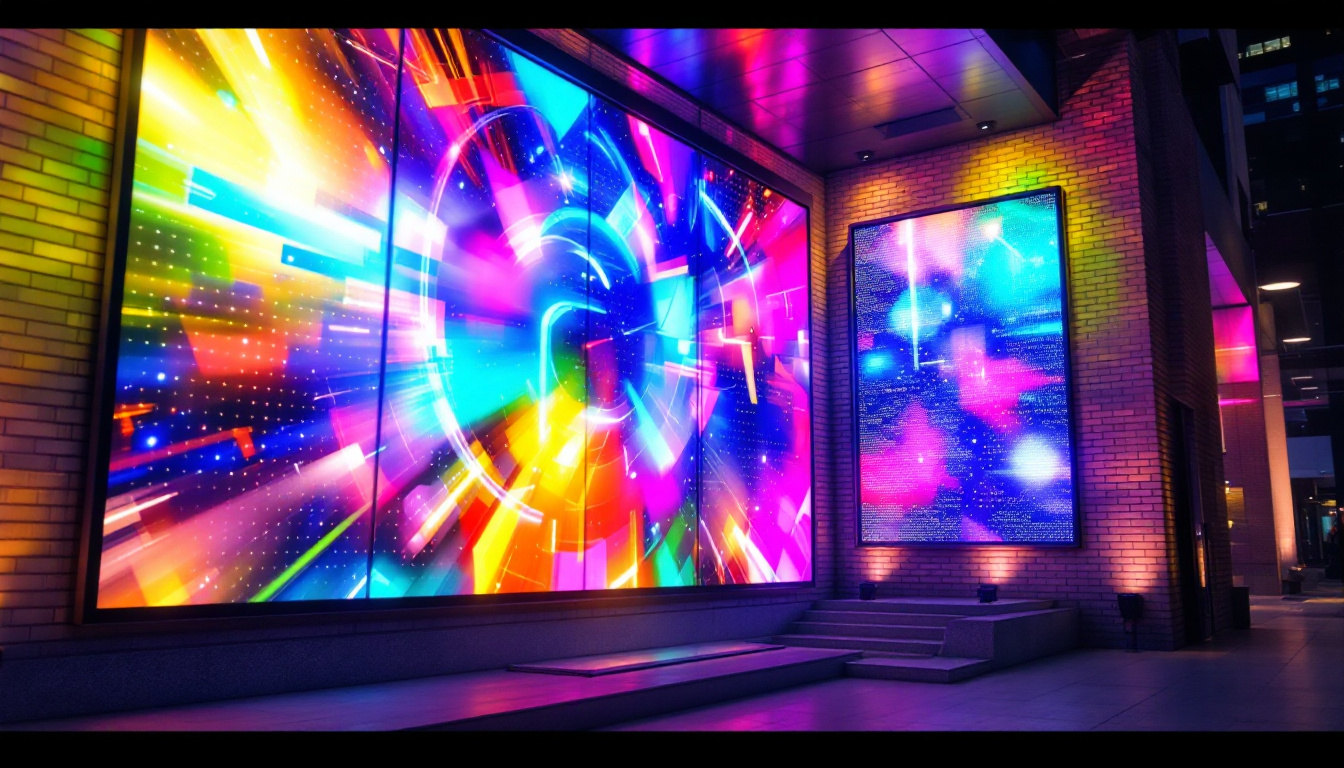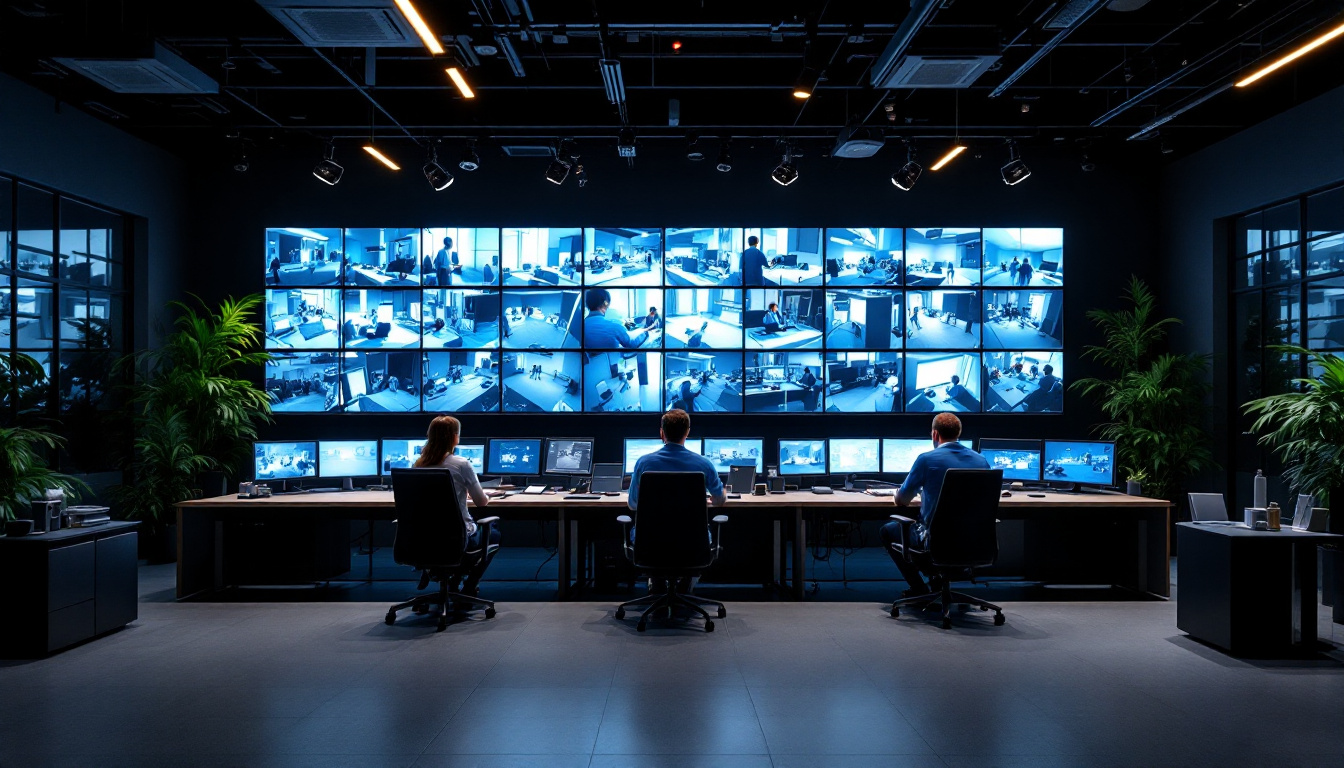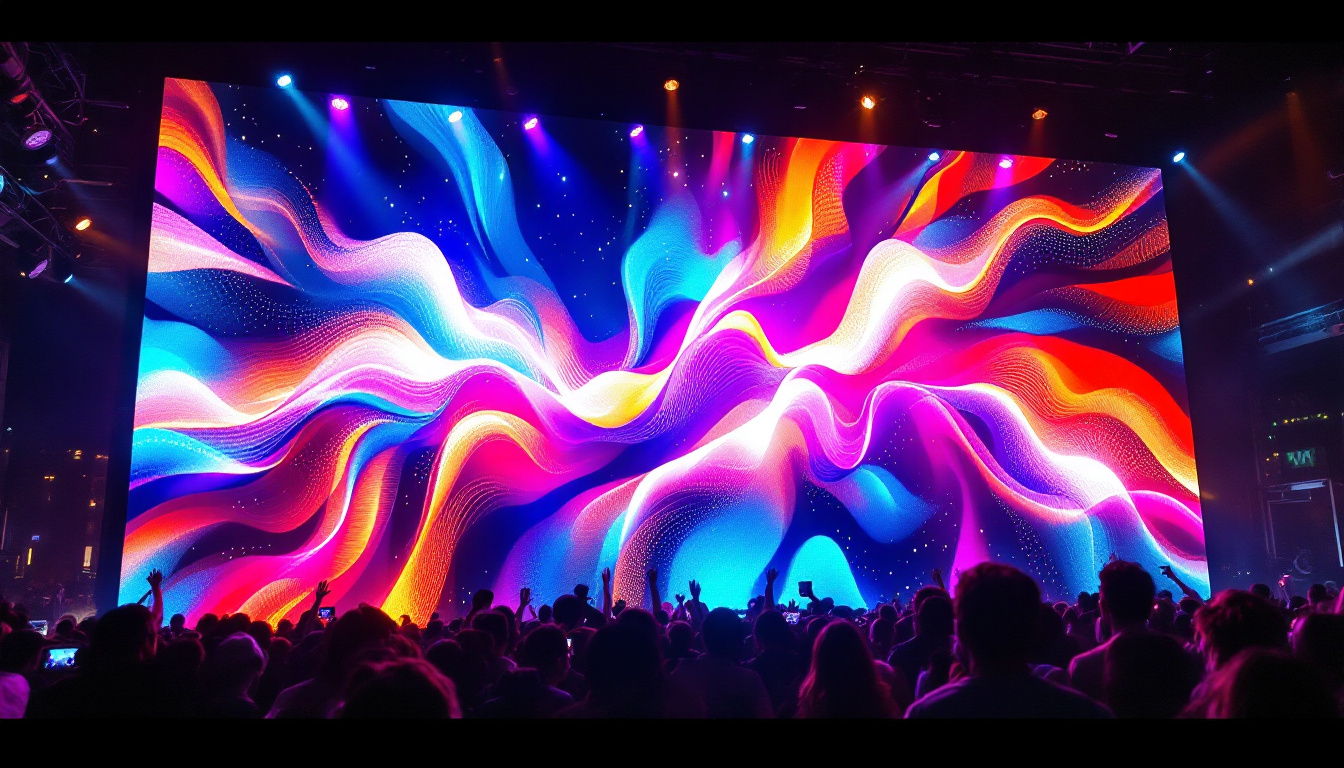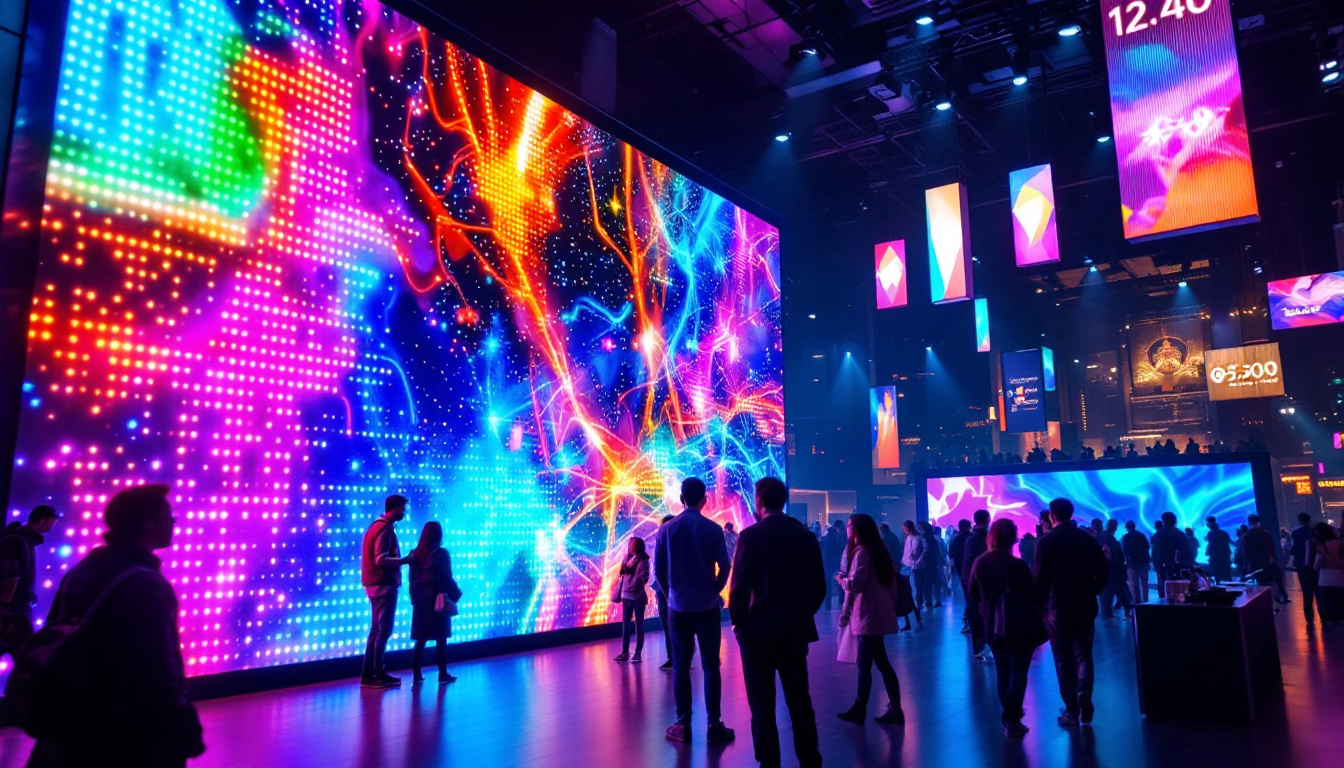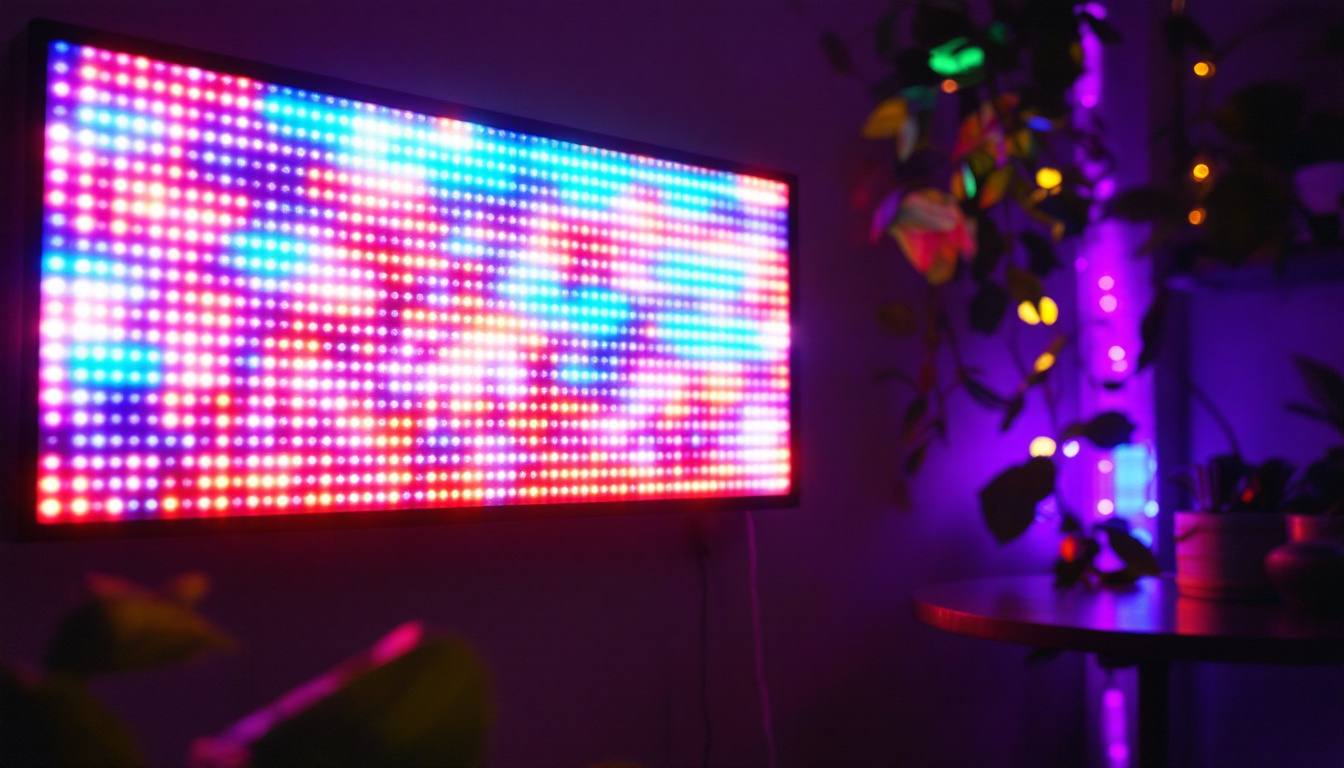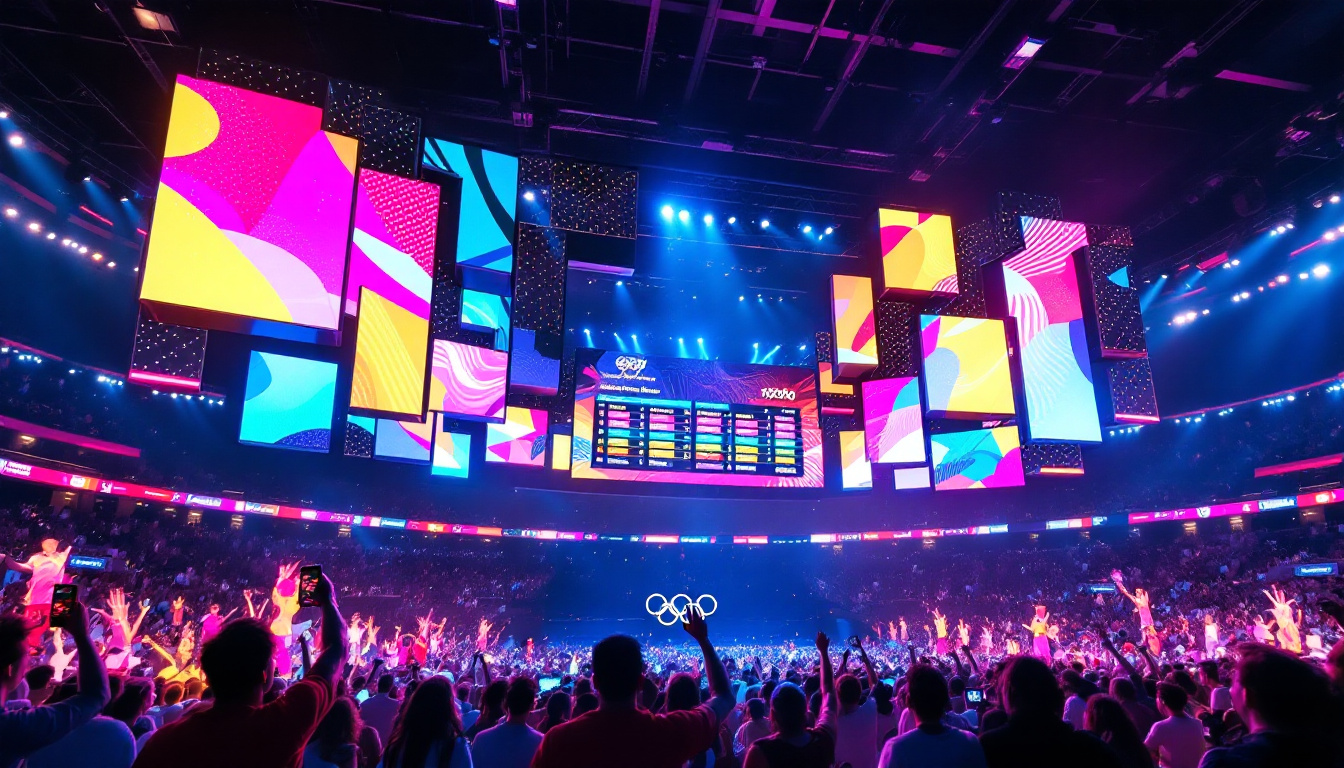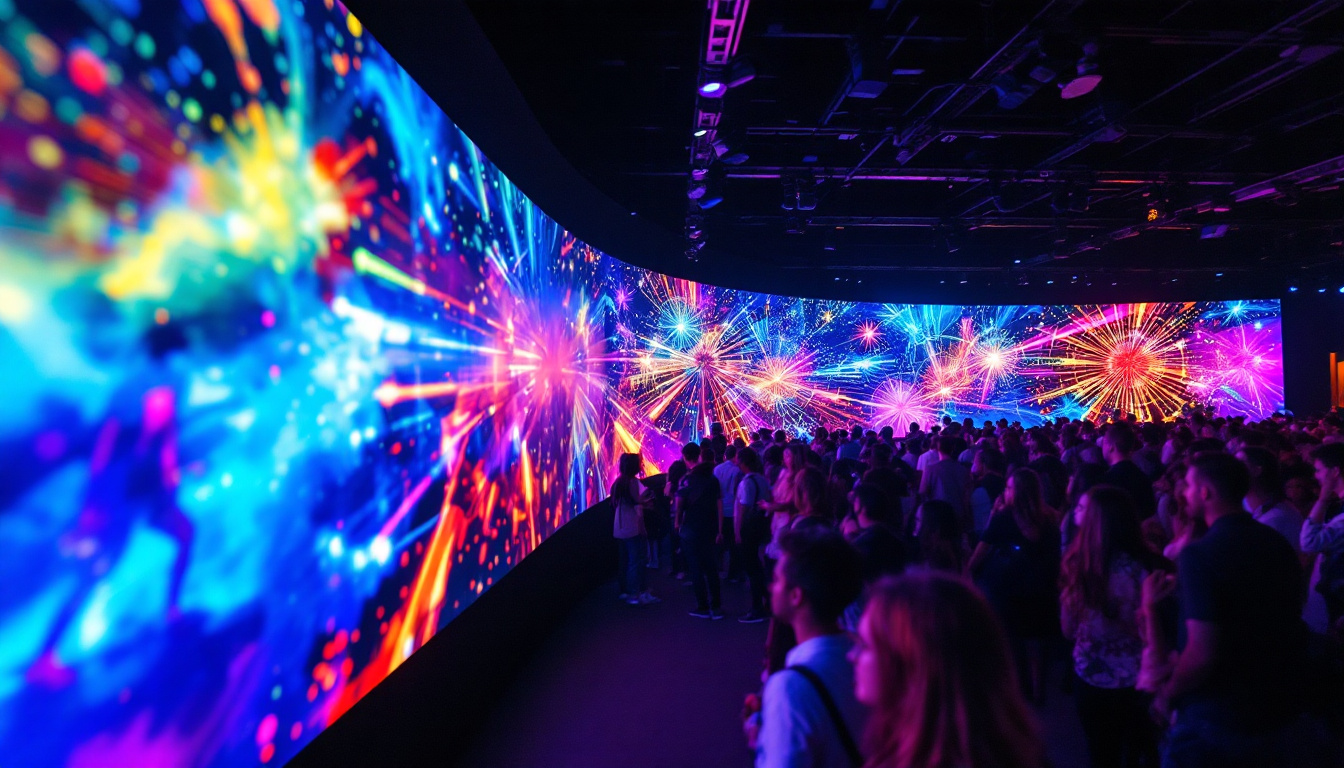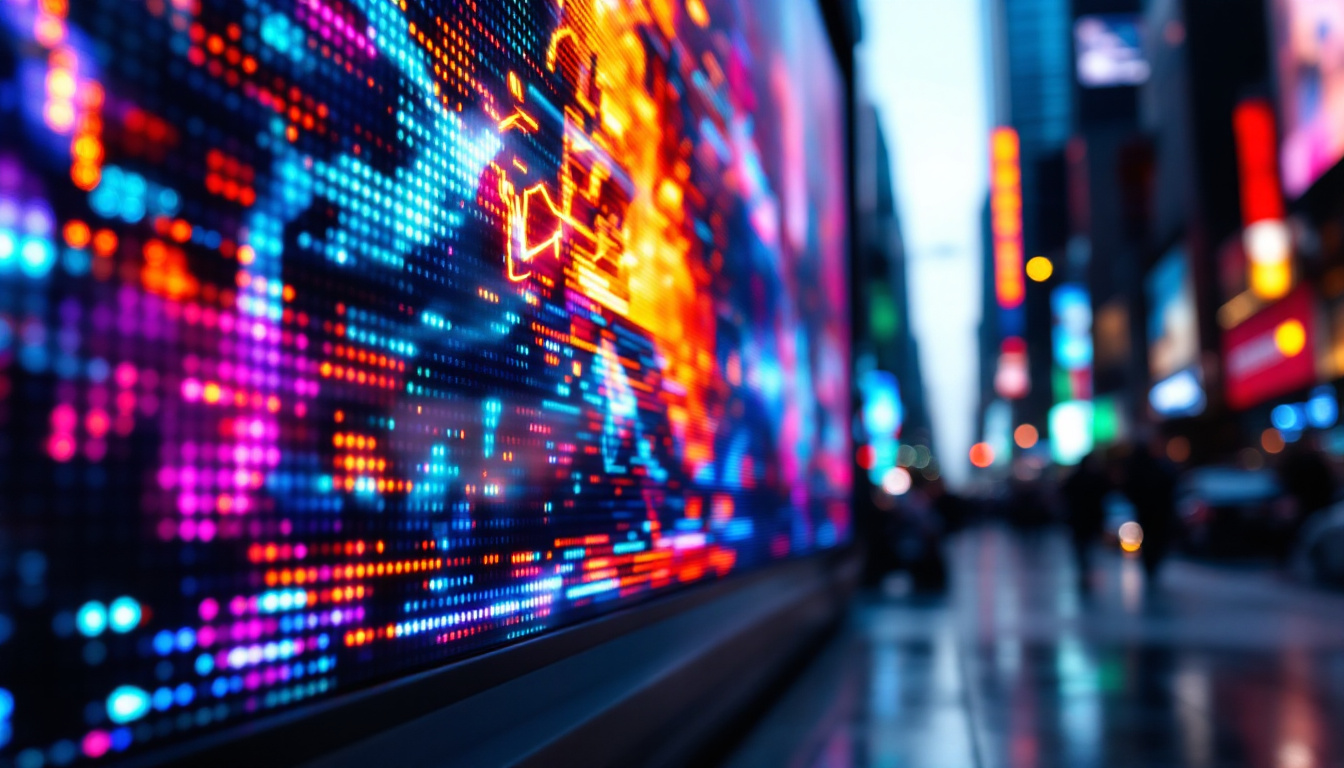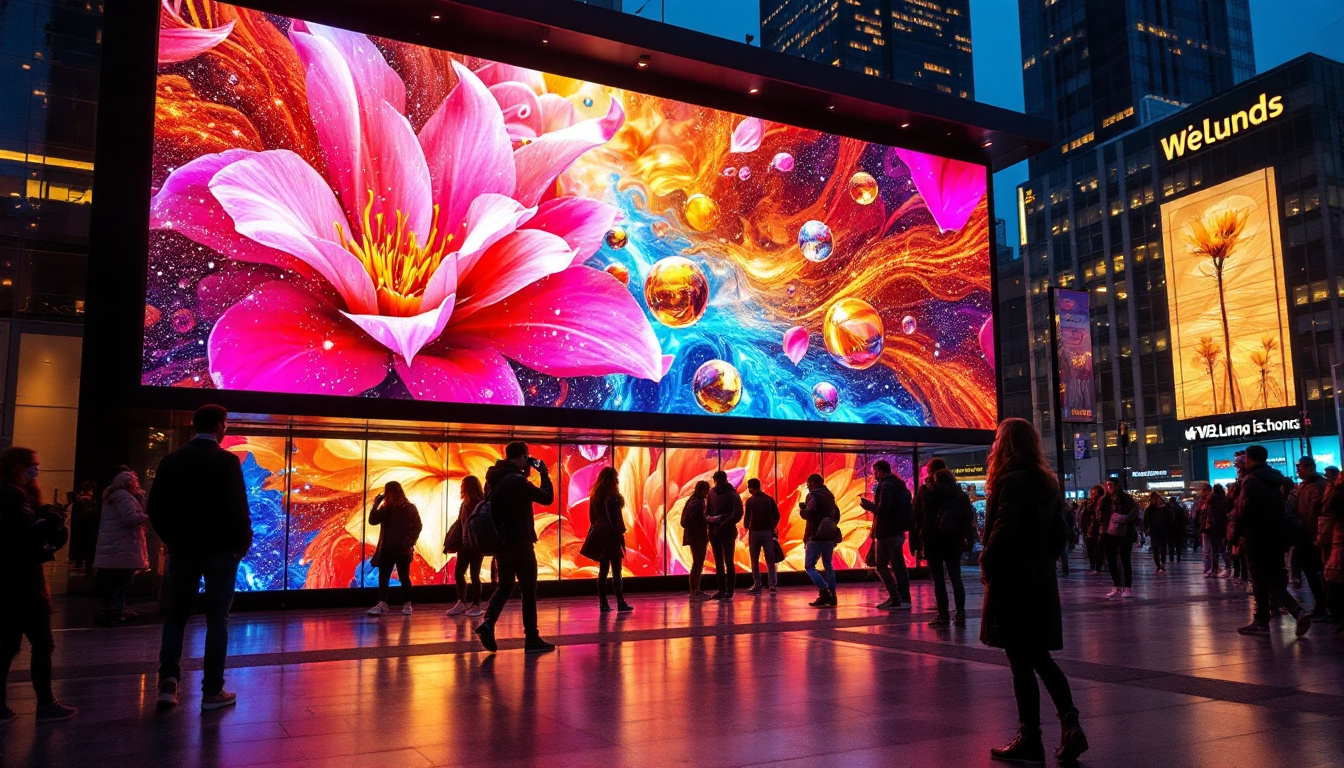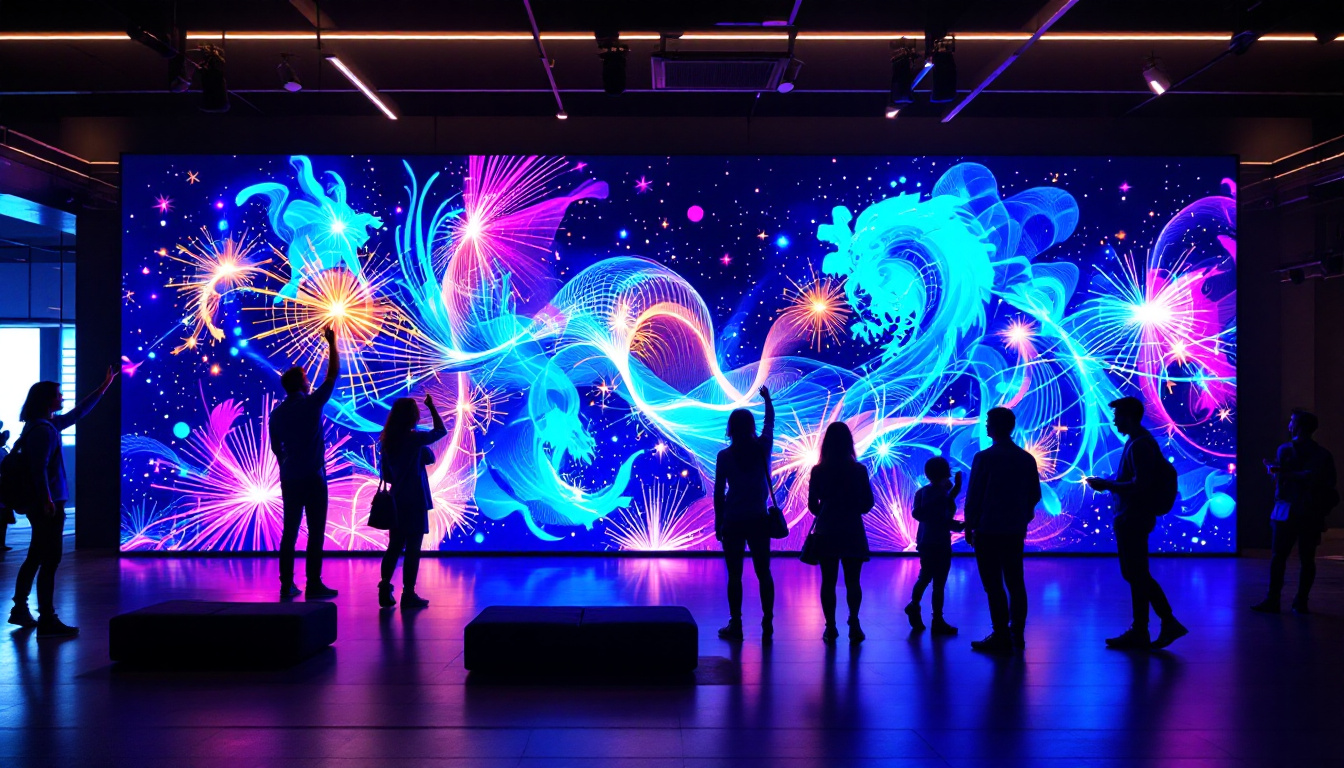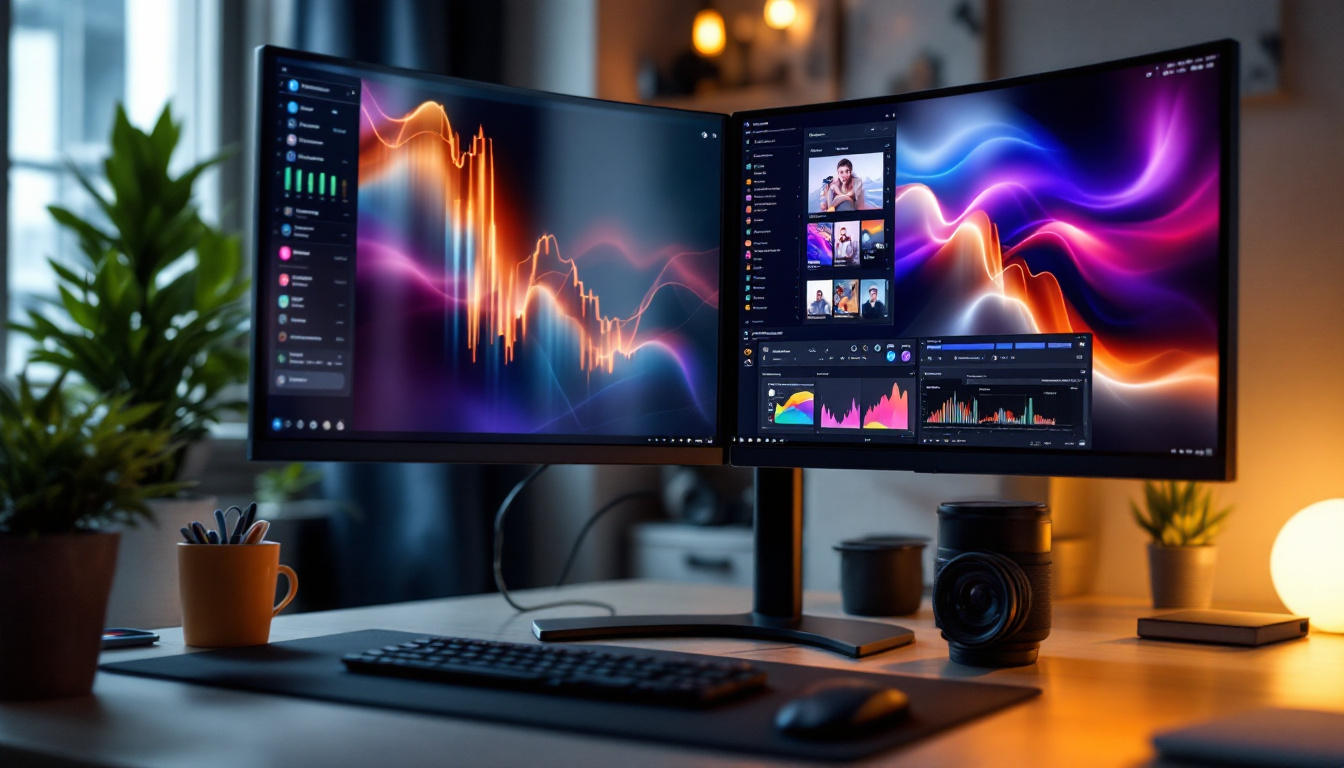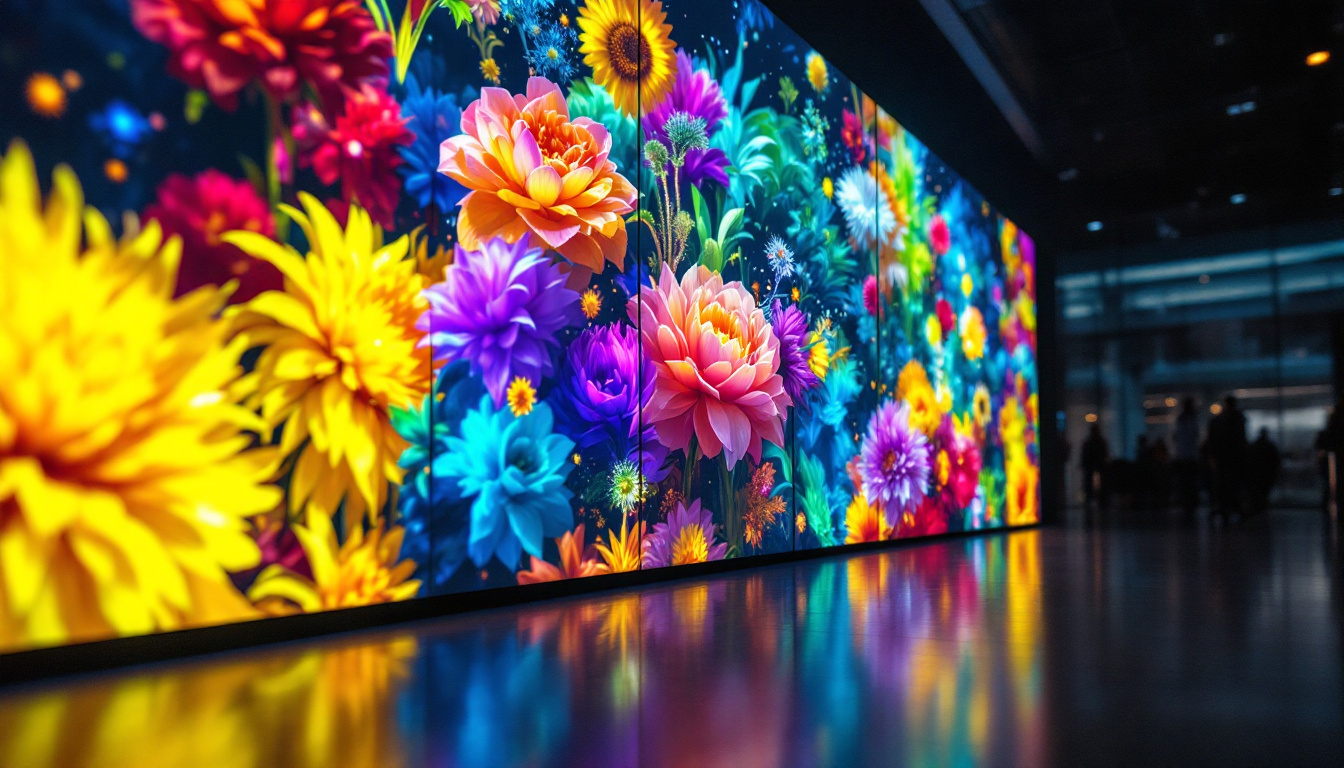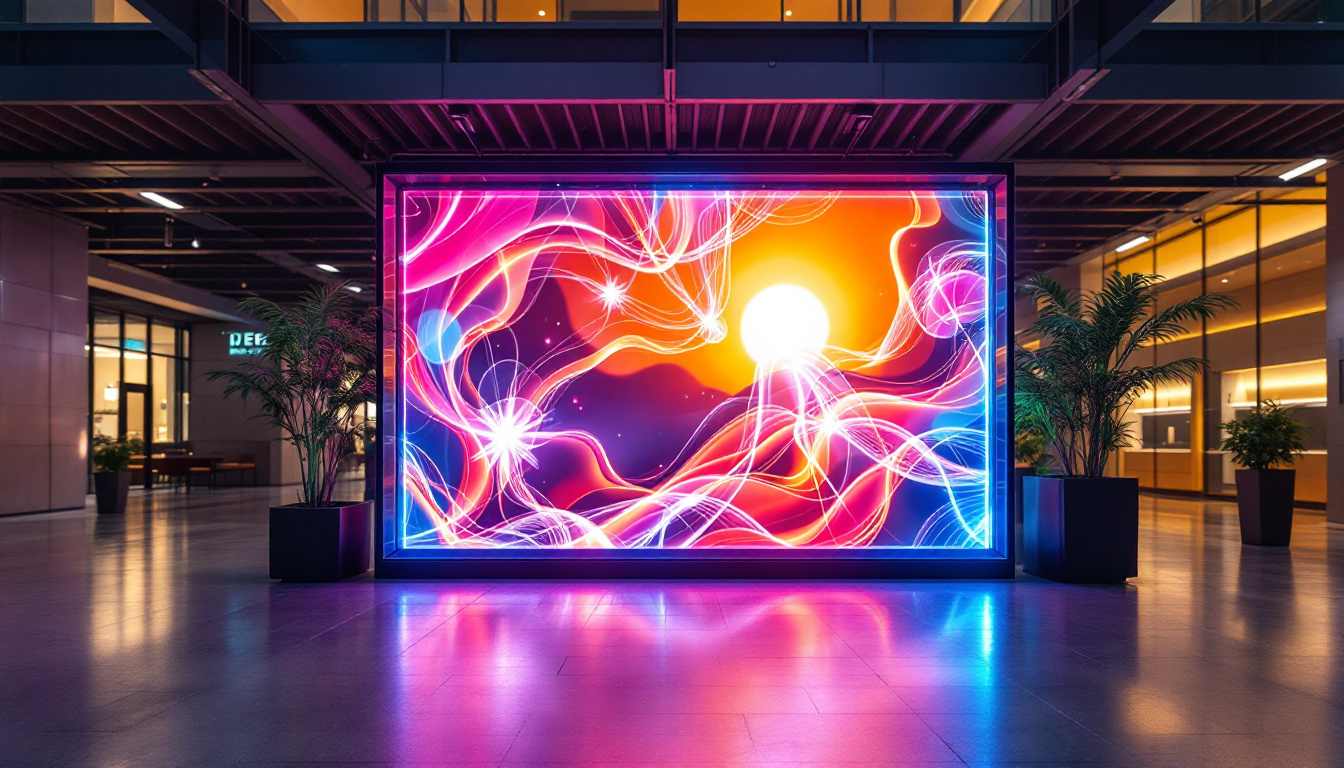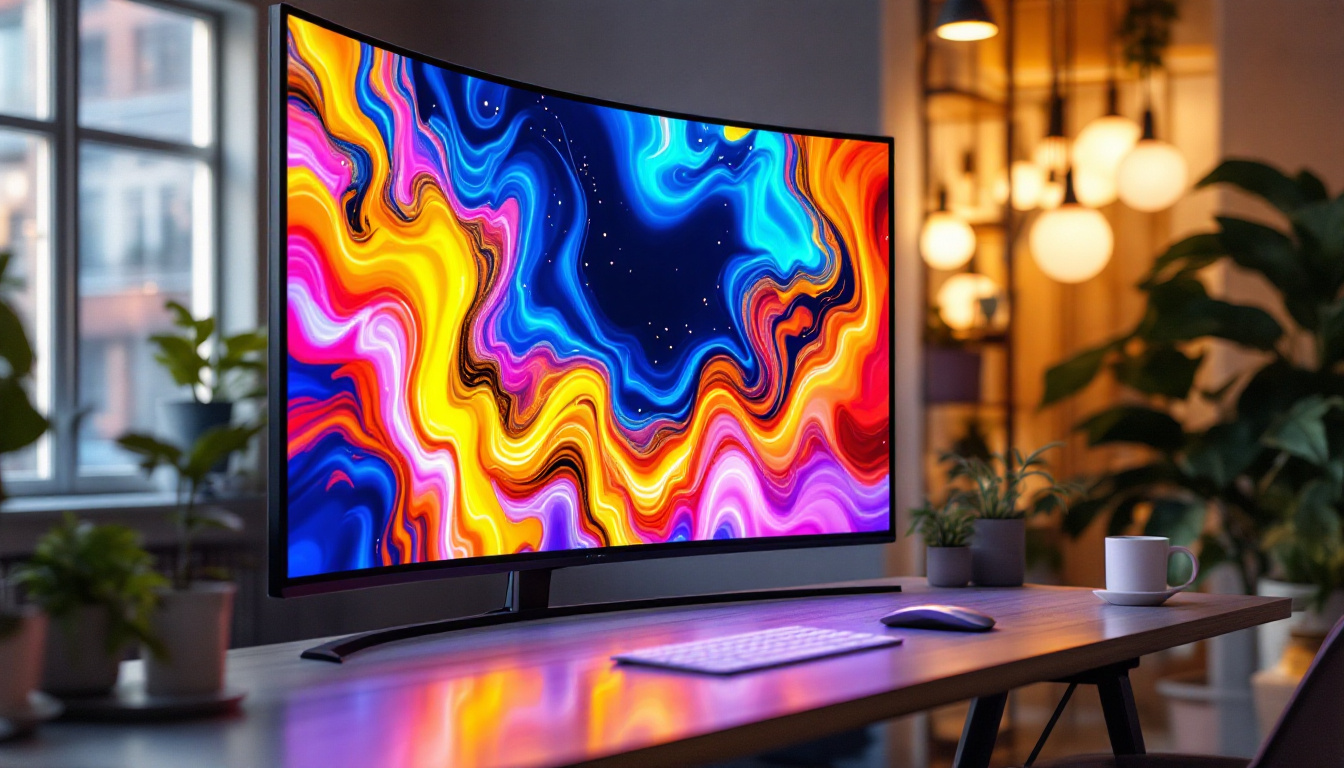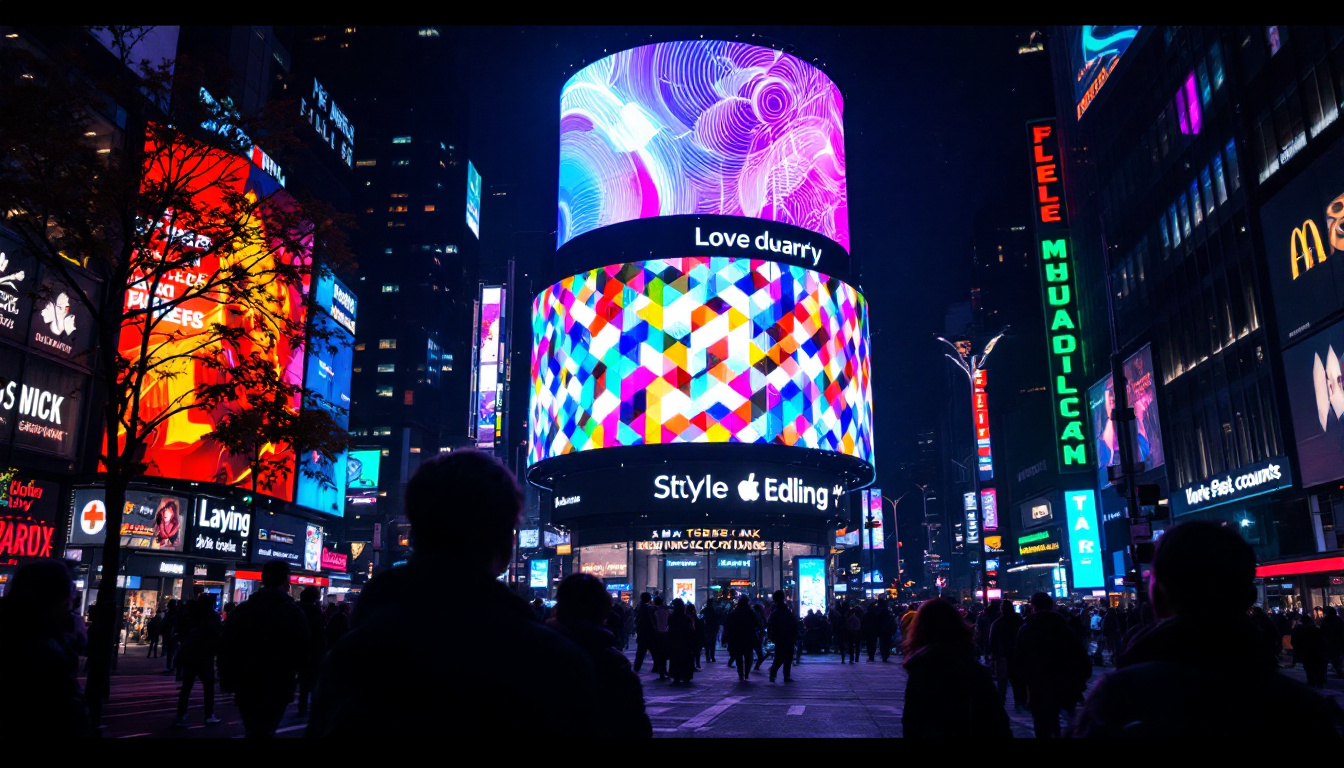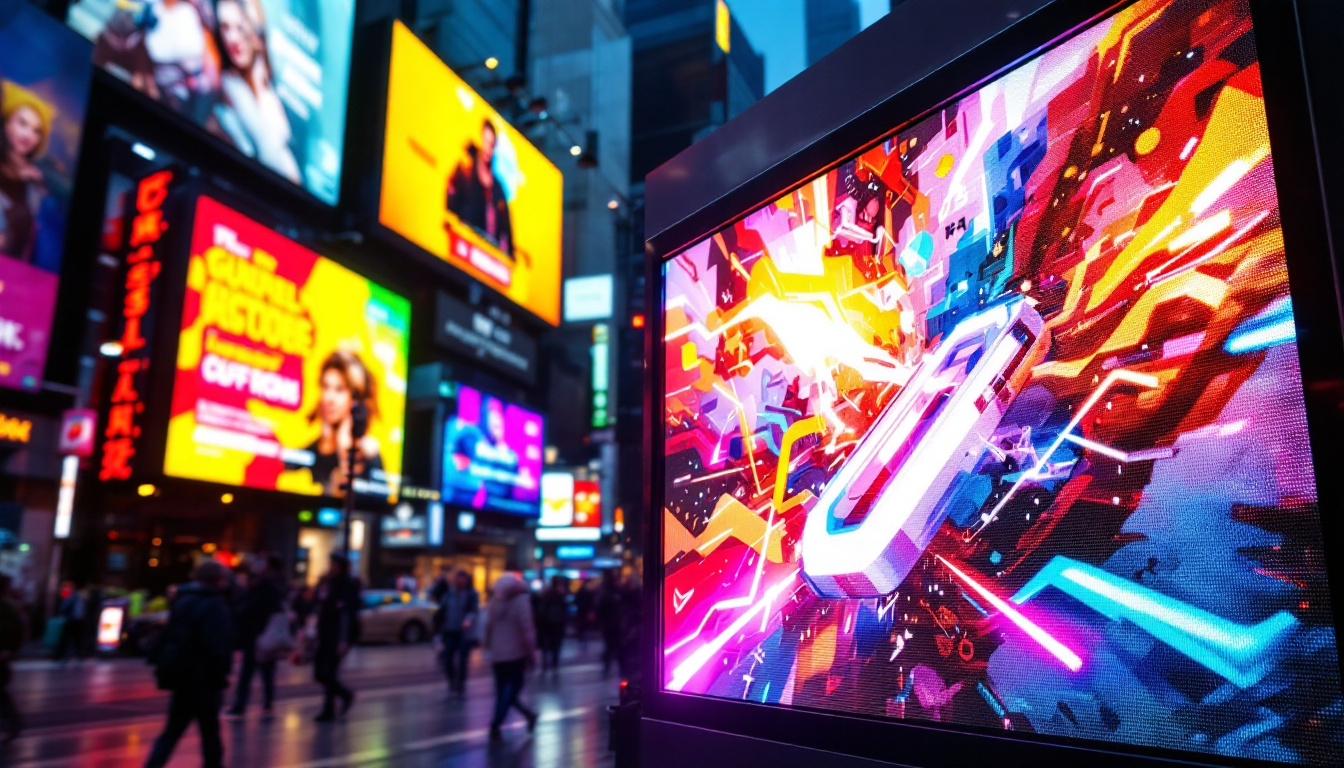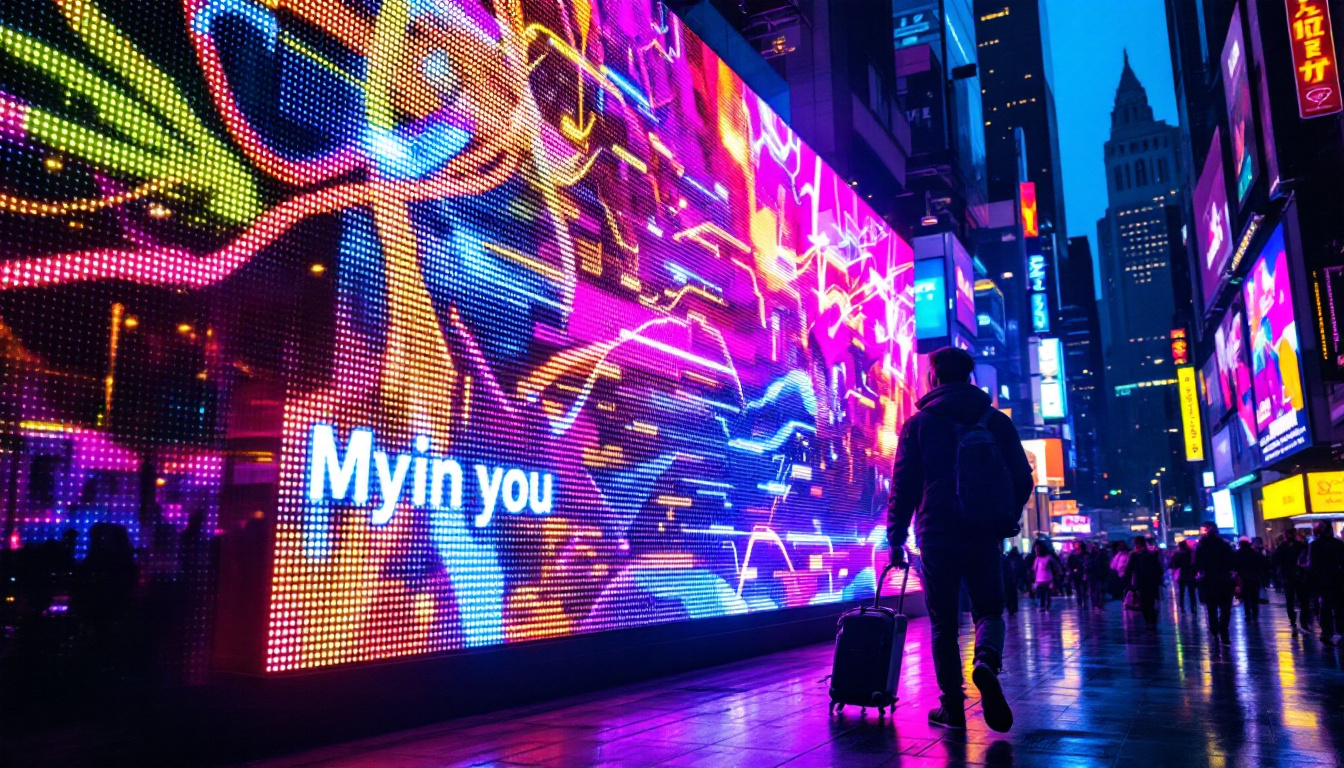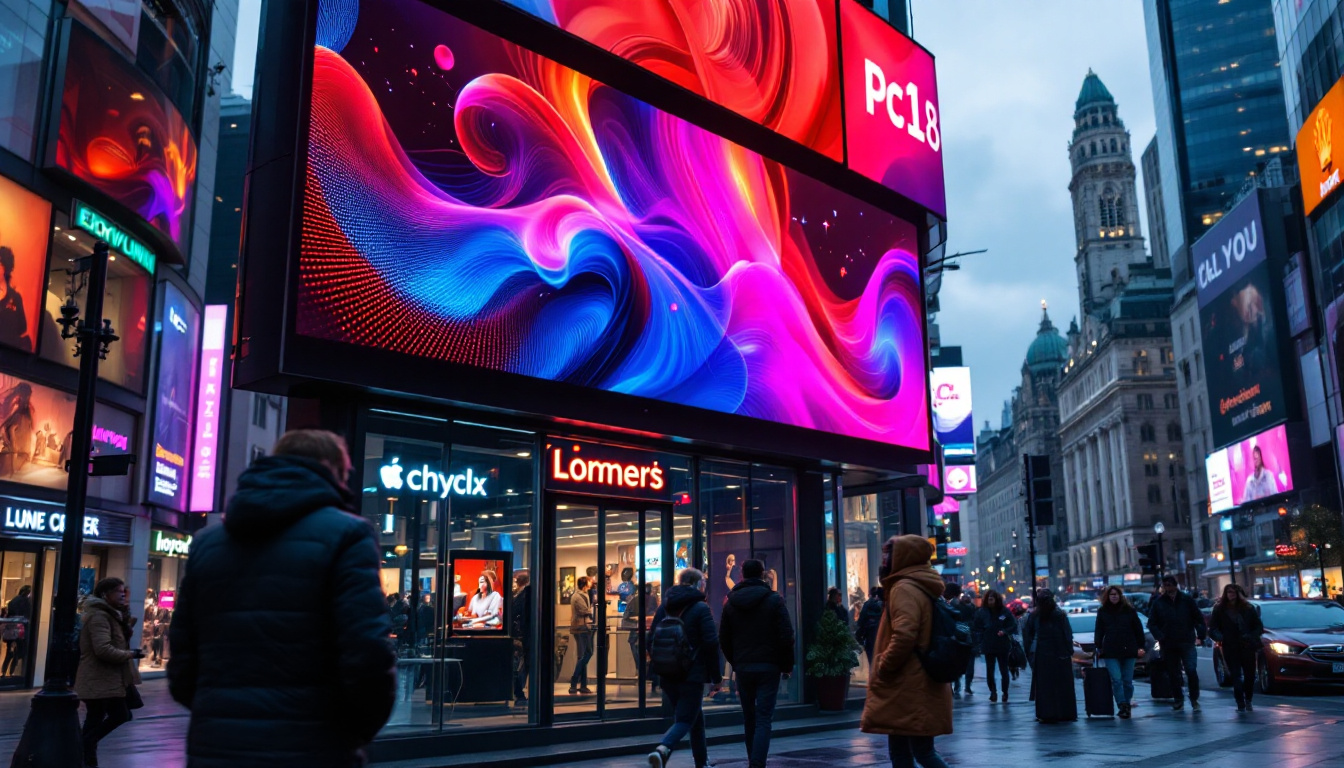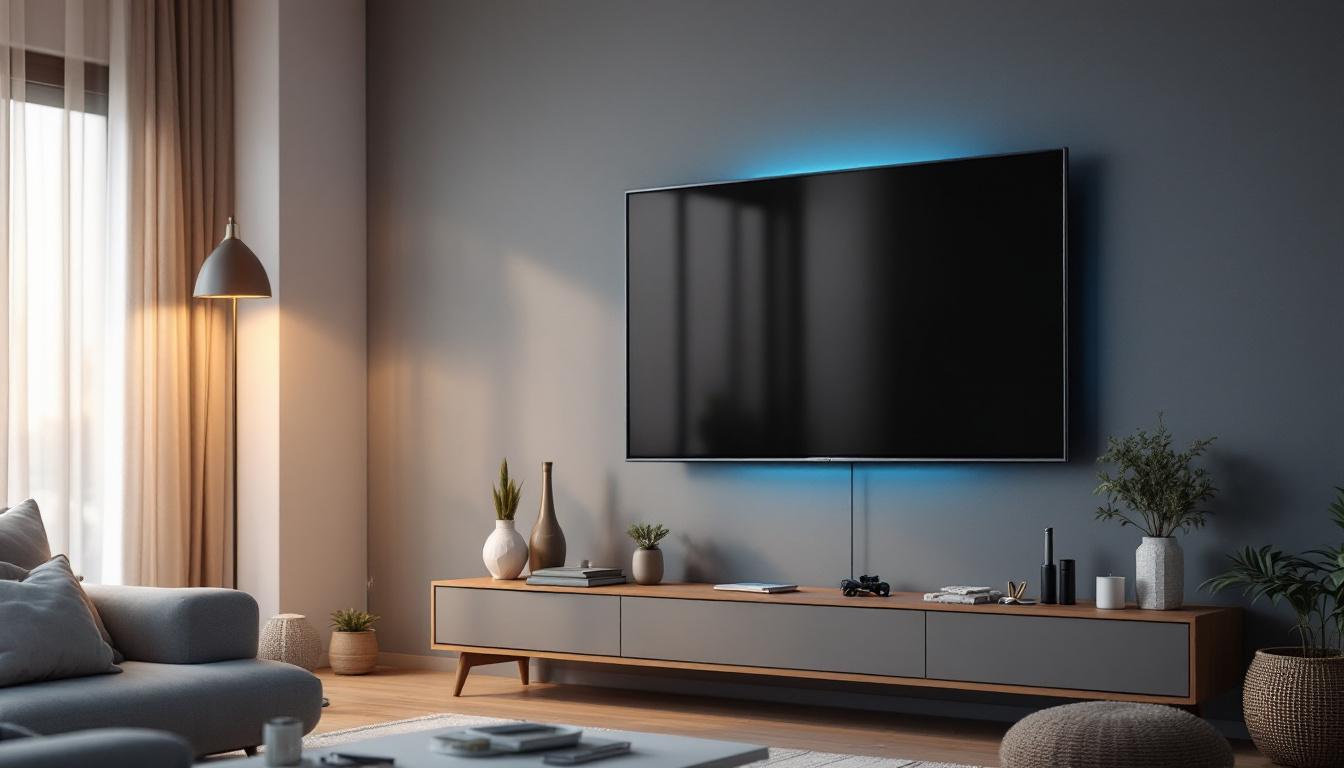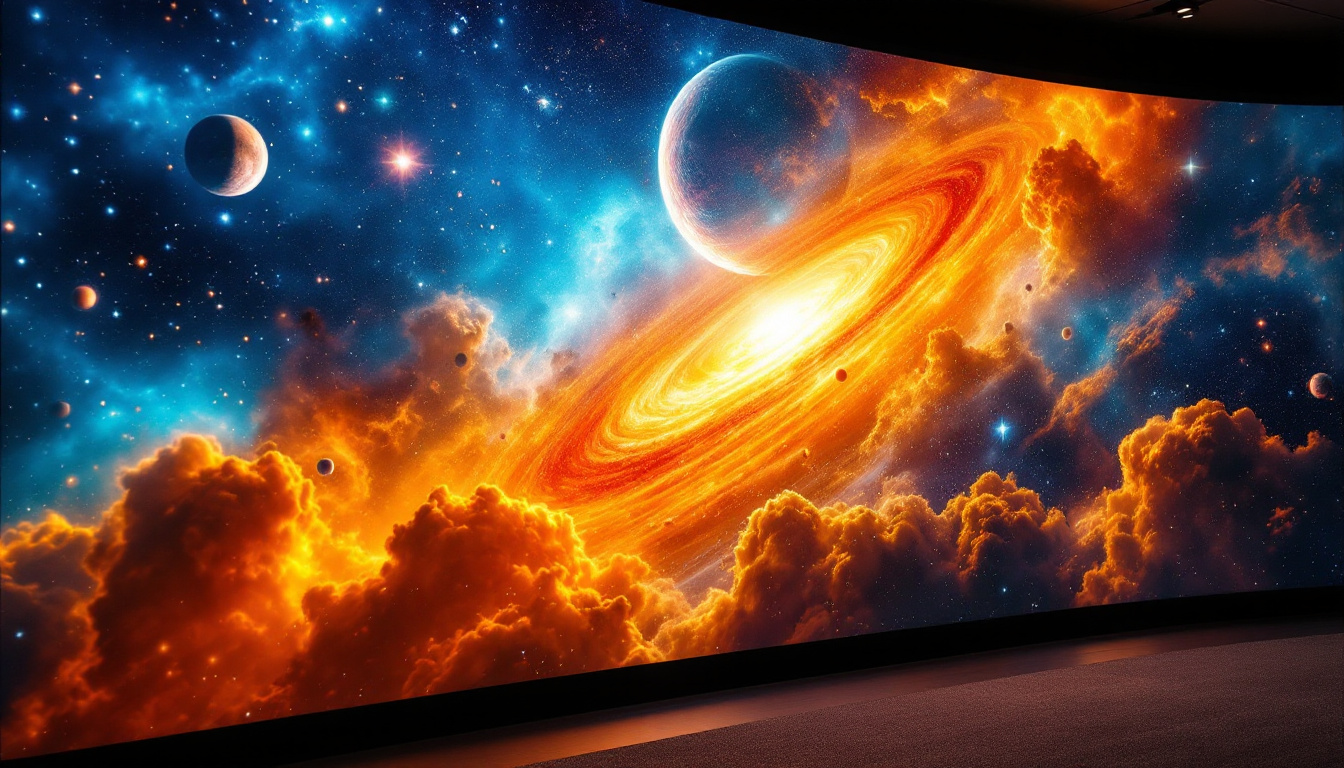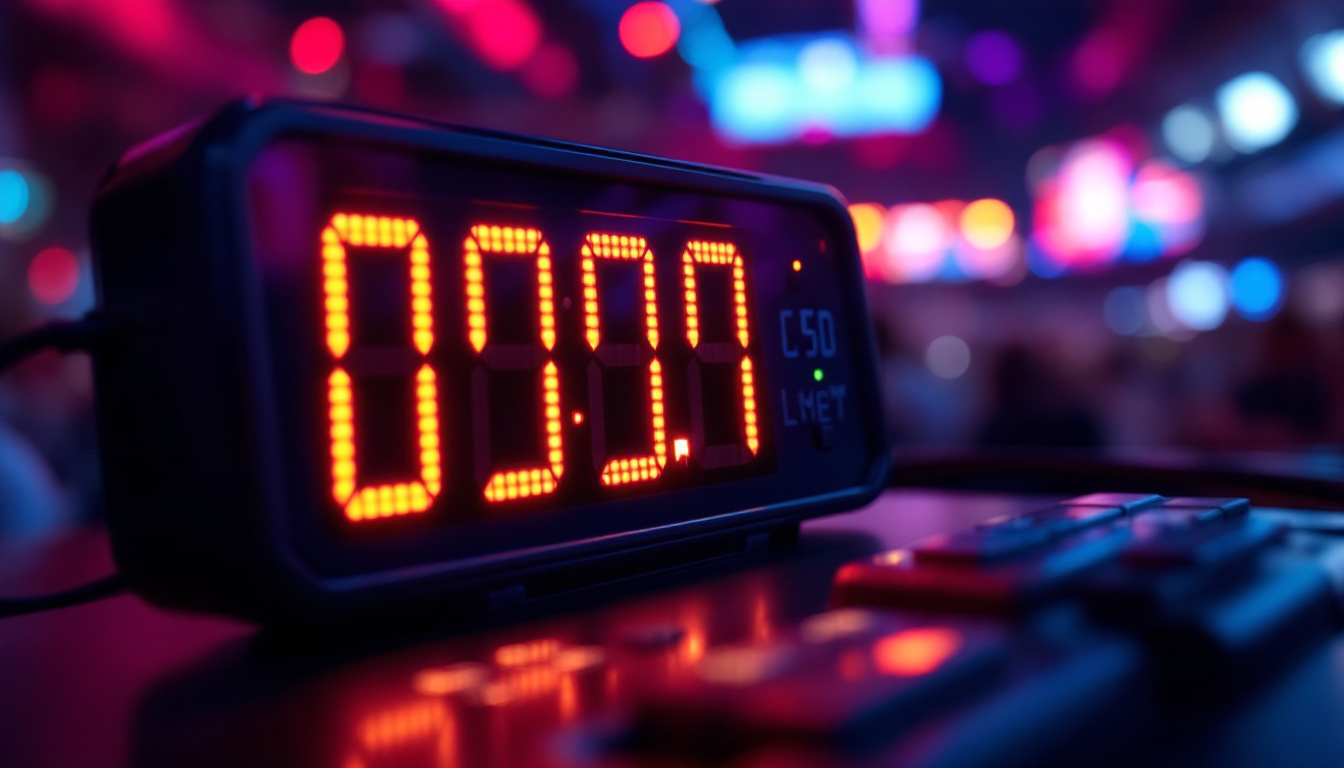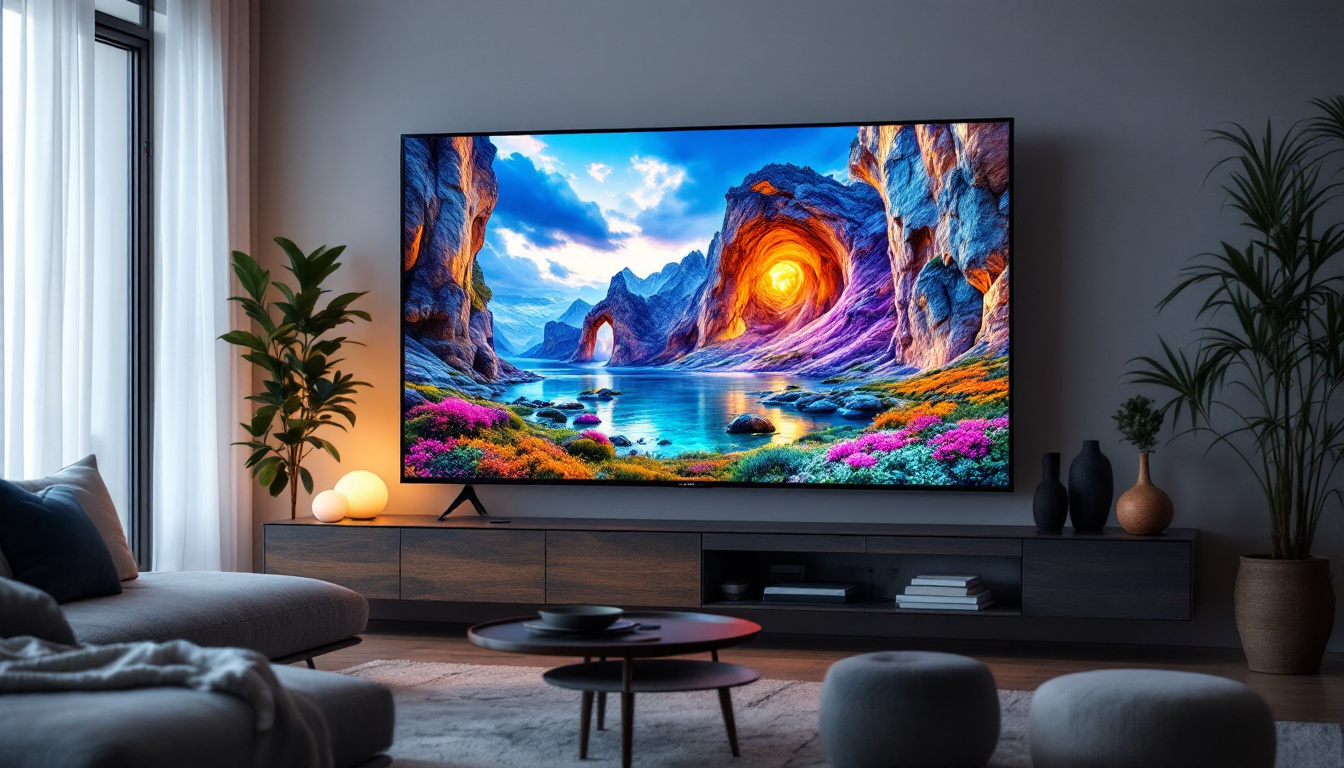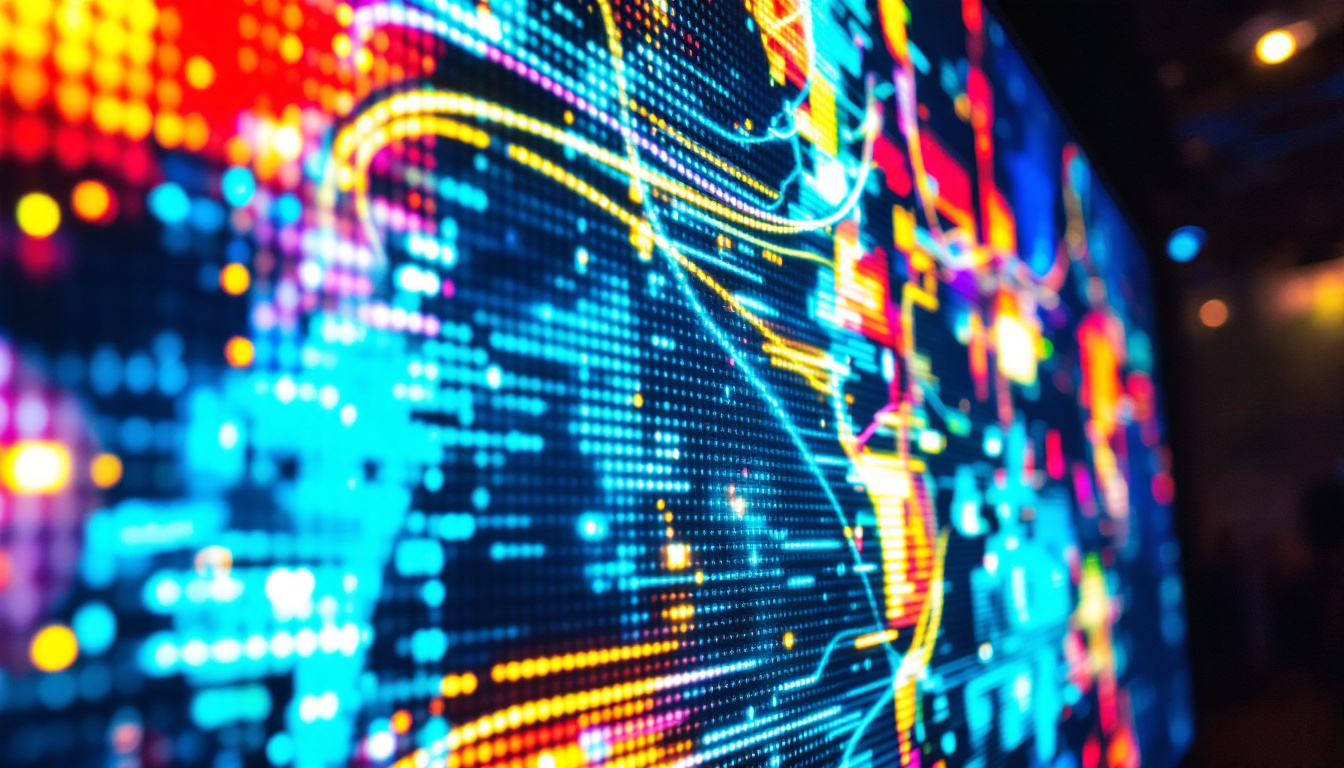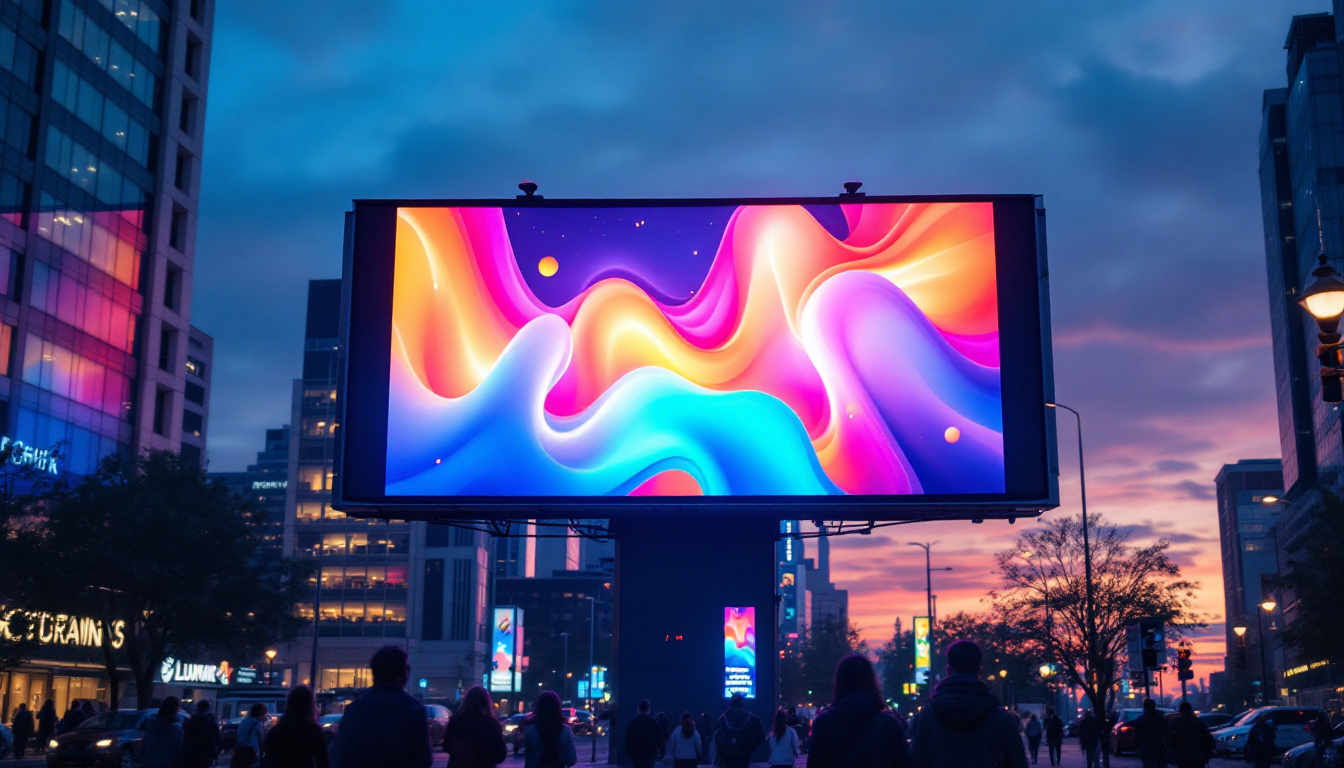In the modern world, the concept of walls has evolved beyond traditional materials like brick and mortar. With the advent of technology, walls can now be dynamic, interactive, and visually stunning. One of the most exciting developments in this realm is the use of LED displays. This article explores the composition, functionality, and applications of LED display walls, shedding light on how they are revolutionizing the way we perceive and interact with our environments.
Understanding LED Technology
LED, or Light Emitting Diode, technology has transformed numerous industries, including advertising, entertainment, and architecture. At its core, an LED is a semiconductor device that emits light when an electric current passes through it. This simple yet powerful technology forms the backbone of LED display walls. The evolution of LED technology has not only improved energy efficiency but has also significantly reduced the size of lighting solutions, paving the way for innovative designs and applications that were once thought impossible.
The Basics of LED Displays
LED displays consist of an array of tiny light-emitting diodes, which are grouped together to form pixels. Each pixel can be controlled individually, allowing for a wide range of colors and brightness levels. This capability enables LED displays to create vibrant images and videos that can capture attention and convey messages effectively. The precision with which these pixels can be manipulated means that LED displays can produce stunning visuals that are not only eye-catching but also highly detailed, making them a preferred choice for high-profile events and advertising campaigns.
There are two primary types of LED displays: direct view and rear projection. Direct view displays are composed of individual LEDs that are visible from the front, while rear projection displays utilize projectors to display images on a translucent screen. Both types have their unique advantages and applications, making them suitable for different environments. For instance, direct view displays are often favored for their brightness and clarity in outdoor settings, while rear projection displays are commonly used in conference rooms and theaters where space is limited and image quality is paramount.
Types of LED Displays
LED displays can be categorized into several types based on their usage and design. The most common types include:
- Indoor LED Displays: Typically used in venues such as shopping malls, airports, and theaters, these displays are designed for close viewing distances and offer high resolution. Their ability to deliver sharp images and smooth video playback makes them ideal for environments where detailed visual communication is essential.
- Outdoor LED Displays: Built to withstand harsh weather conditions, outdoor displays are larger and brighter, making them ideal for billboards and stadiums. These displays often feature advanced technologies like automatic brightness adjustment to ensure visibility in varying light conditions, further enhancing their effectiveness in outdoor advertising.
- Flexible LED Displays: These displays can be bent and shaped to fit various surfaces, allowing for creative installations that can enhance architectural designs. Their adaptability has opened up new avenues for artistic expression and branding, enabling businesses to create immersive environments that engage customers in unique ways.
In addition to these common types, there are also specialized LED displays, such as transparent LED screens that allow viewers to see through them while still displaying vibrant content. This innovative design is particularly popular in retail environments, where it can be used to showcase products while maintaining an open and inviting atmosphere. Furthermore, advancements in LED technology continue to push the boundaries of what’s possible, with developments in microLED and miniLED technologies promising even greater resolution and efficiency for future applications.
The Components of LED Displays
Understanding the components that make up an LED display wall is essential to appreciate its functionality and versatility. Each component plays a crucial role in ensuring the display operates efficiently and delivers high-quality visuals.
LED Modules
LED modules are the building blocks of LED displays. Each module contains a matrix of LEDs arranged in a grid pattern. These modules can be easily assembled to create larger displays, making them highly customizable. The resolution of the display is determined by the number of pixels in each module, with higher pixel density resulting in sharper images.
Control Systems
The control system is the brain of the LED display. It manages the input signals and determines how the images and videos are rendered on the screen. Advanced control systems allow for real-time content updates, synchronization with audio, and even interactive features, enhancing the overall user experience.
Power Supply
A reliable power supply is crucial for the operation of LED displays. LED technology is energy-efficient, but the power supply must provide consistent voltage and current to ensure optimal performance. Many modern displays incorporate smart power management systems that help reduce energy consumption while maintaining brightness and clarity.
Applications of LED Display Walls
LED display walls are increasingly being used across various sectors, thanks to their versatility and visual impact. From advertising to entertainment, the applications are vast and varied.
Advertising and Marketing
One of the most prominent uses of LED display walls is in advertising. Brands leverage the vibrant colors and dynamic content capabilities of LED displays to capture the attention of potential customers. Whether in a bustling city center or a sports arena, LED billboards and screens can convey messages effectively and engage audiences in real-time.
Entertainment and Events
In the entertainment industry, LED display walls have become a staple at concerts, festivals, and live events. They provide stunning visual backdrops that enhance the overall experience for attendees. By integrating lighting effects and synchronized visuals, event organizers can create immersive environments that leave lasting impressions.
Corporate and Educational Settings
LED display walls are also making their mark in corporate and educational settings. In conference rooms, they can be used for presentations, video conferencing, and collaborative work. Educational institutions utilize LED displays for interactive learning experiences, allowing for dynamic presentations that engage students and facilitate better understanding of complex subjects.
Advantages of LED Display Walls
The growing popularity of LED display walls can be attributed to numerous advantages they offer over traditional display technologies. Understanding these benefits can help organizations make informed decisions when considering LED solutions.
High Visibility and Brightness
One of the standout features of LED displays is their high visibility, even in bright ambient light. This makes them ideal for outdoor applications, where sunlight can wash out other display types. The brightness of LED displays ensures that content remains clear and legible, regardless of the environment.
Energy Efficiency
LED technology is known for its energy efficiency. Compared to traditional display technologies like LCD or plasma, LED displays consume significantly less power. This not only reduces operational costs but also minimizes the environmental impact, making them a sustainable choice for organizations.
Longevity and Durability
LED displays are built to last. With a lifespan of up to 100,000 hours, they outlast many other display technologies. Additionally, they are resistant to shock and vibration, making them suitable for various environments, including outdoor installations where they may be exposed to the elements.
Challenges and Considerations
While LED display walls offer numerous benefits, there are also challenges and considerations that organizations must address when implementing this technology.
Initial Cost
The initial investment for LED display walls can be significant. High-quality displays can be expensive, and organizations must weigh the upfront costs against the long-term benefits. However, it is essential to consider the return on investment, as the energy savings and increased engagement can offset the initial expenditure over time.
Technical Expertise
Installing and maintaining LED display walls requires technical expertise. Organizations may need to invest in training or hire specialists to ensure proper setup and ongoing support. This can add to the overall cost and complexity of the project, making careful planning essential.
Content Management
Effective content management is crucial for maximizing the impact of LED displays. Organizations must develop a strategy for creating, updating, and scheduling content to keep audiences engaged. This may require additional resources, including graphic designers and content creators, to ensure that the visuals are compelling and relevant.
The Future of LED Display Walls
The future of LED display walls is bright, with continuous advancements in technology and design. As the demand for dynamic and interactive visual experiences grows, manufacturers are innovating to create even more sophisticated displays.
Integration with Smart Technology
One of the most exciting trends is the integration of LED displays with smart technology. This includes features such as IoT connectivity, allowing displays to interact with other devices and systems. For example, LED displays can be programmed to change content based on real-time data, such as weather conditions or social media trends, creating a more personalized experience for viewers.
Enhanced Resolution and Color Accuracy
As technology advances, LED displays are becoming increasingly capable of delivering higher resolutions and improved color accuracy. This means that images and videos will look even more lifelike, enhancing the overall viewing experience. Future displays may also incorporate technologies like microLED, which offers even smaller pixels and greater flexibility in design.
Environmental Sustainability
With growing concerns about environmental sustainability, manufacturers are focusing on creating eco-friendly LED displays. This includes using recyclable materials, reducing energy consumption, and implementing sustainable manufacturing processes. As organizations become more environmentally conscious, the demand for sustainable display solutions is likely to increase.
Conclusion
LED display walls represent a significant evolution in the concept of walls, transforming them from static barriers into dynamic canvases for communication and engagement. With their high visibility, energy efficiency, and versatility, LED displays are becoming essential tools in various industries, from advertising to education.
As technology continues to advance, the potential applications and capabilities of LED display walls will only expand. Organizations that embrace this innovative technology will not only enhance their visual communication strategies but also position themselves at the forefront of the digital age.
In a world where attention is a precious commodity, LED display walls offer a powerful solution to captivate audiences and convey messages effectively. The future of walls is here, and it is illuminated by the brilliance of LED technology.
Illuminate Your Space with LumenMatrix
Ready to transform your walls into dynamic canvases and elevate your visual communication? LumenMatrix is at the forefront of LED display innovation, offering a wide array of solutions to meet your needs. From captivating Indoor and Outdoor LED Wall Displays to versatile Vehicle and Sports LED Displays, our technology is designed to make your brand shine. Discover the possibilities with our LED Poster, Floor, Custom, All-in-One, and Transparent Displays. Embrace the future of engagement with LumenMatrix and let your message resonate with clarity and impact. Check out LumenMatrix LED Display Solutions today and step into the light of advanced visual storytelling.

